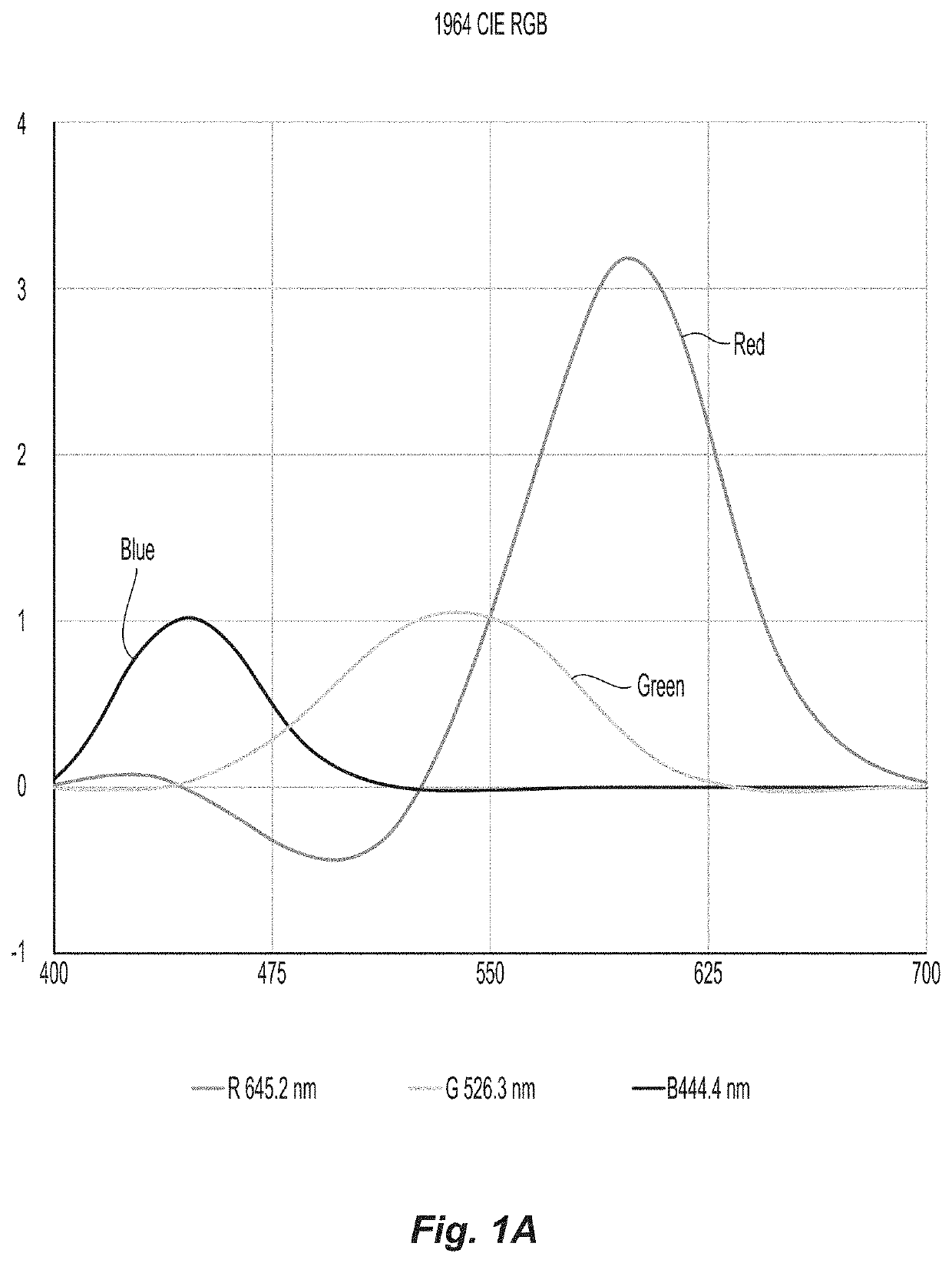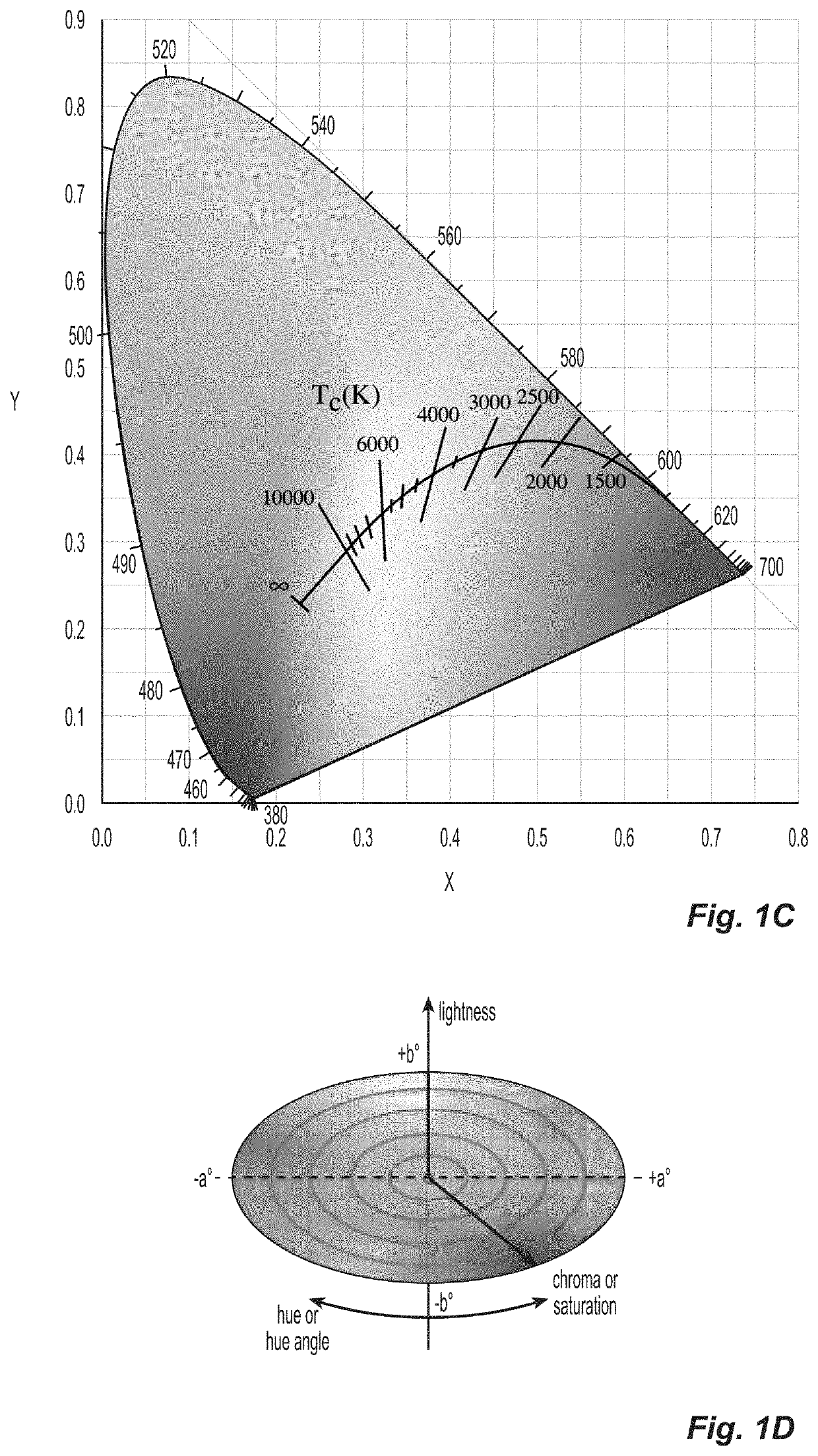System for colorimetry and a transformation from a non-uniform color space to a substantially uniform color space
- Summary
- Abstract
- Description
- Claims
- Application Information
AI Technical Summary
Benefits of technology
Problems solved by technology
Method used
Image
Examples
Embodiment Construction
[0047]The angles between the axes of the primaries illustrated in the chromaticity diagram shown in FIG. 1C are not orthogonal, as discussed above. For the present invention and analysis, the present inventors selected the 1964 CIE RGB data from the color matching functions, as illustrated in FIG. 1A, as the starting point for the [3×43] matrix A.
[0048]The present inventors have devised a plurality of transformation matrices to be applied to or multiply into the matrix A. It is understood that multiple transformation matrices can be multiplied together or combined with each other to create a single transformation matrix, and the present invention covers both scenarios. Hence,
A·T=A·T1·T2·T3 (2.0)
where T is a combined transformation matrix, and
[0049]T can also be T1·T2·T3, or two, three or more transformation matrices.
[0050]Matrix T1 inverts or more accurately pseudo-inverts A. Since A is a rectangular matrix, A·T1=A+, which is a pseudo-inverse of A. The Moore-Penrose Pseudoinverse i...
PUM
 Login to View More
Login to View More Abstract
Description
Claims
Application Information
 Login to View More
Login to View More - R&D
- Intellectual Property
- Life Sciences
- Materials
- Tech Scout
- Unparalleled Data Quality
- Higher Quality Content
- 60% Fewer Hallucinations
Browse by: Latest US Patents, China's latest patents, Technical Efficacy Thesaurus, Application Domain, Technology Topic, Popular Technical Reports.
© 2025 PatSnap. All rights reserved.Legal|Privacy policy|Modern Slavery Act Transparency Statement|Sitemap|About US| Contact US: help@patsnap.com



